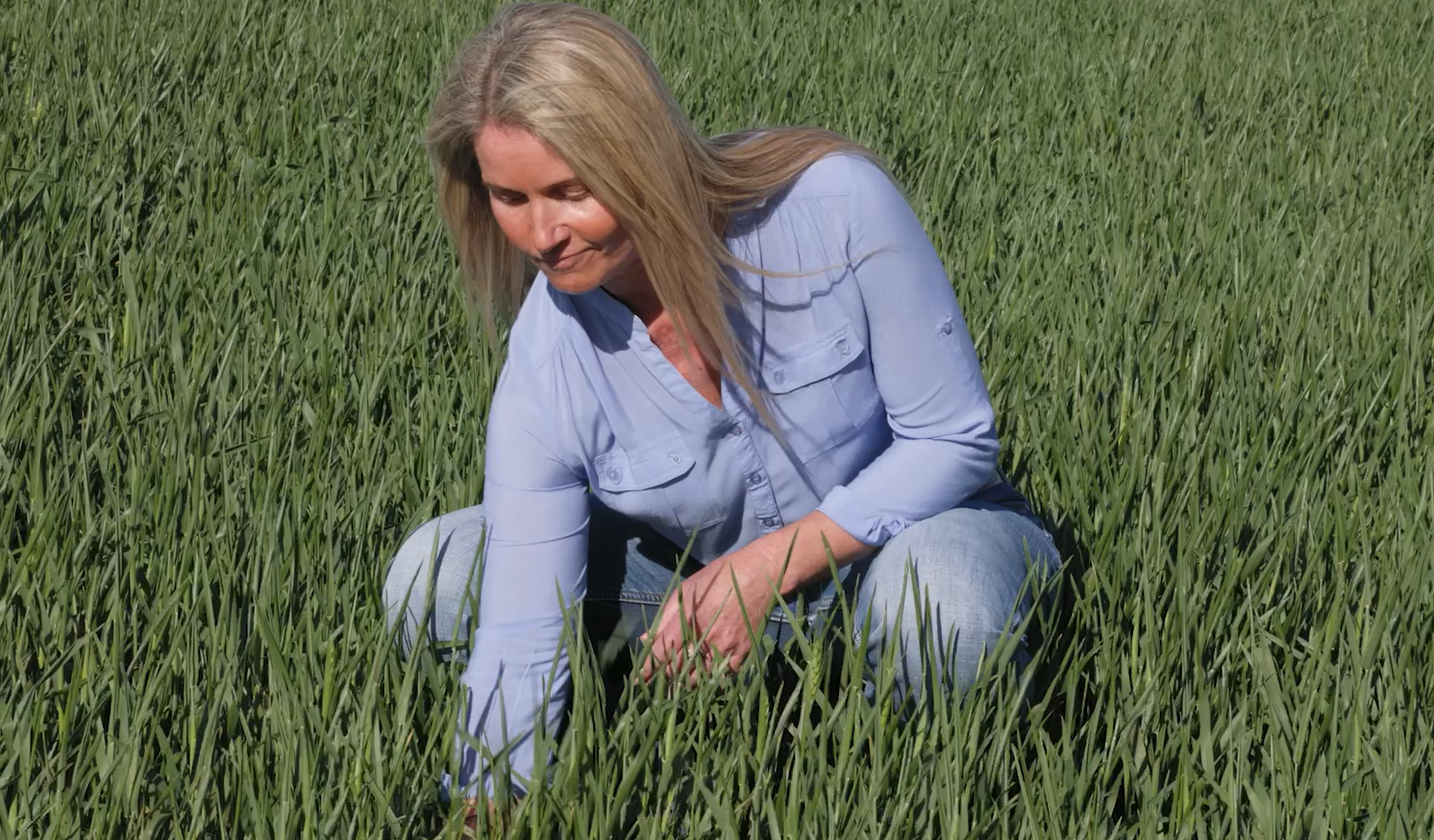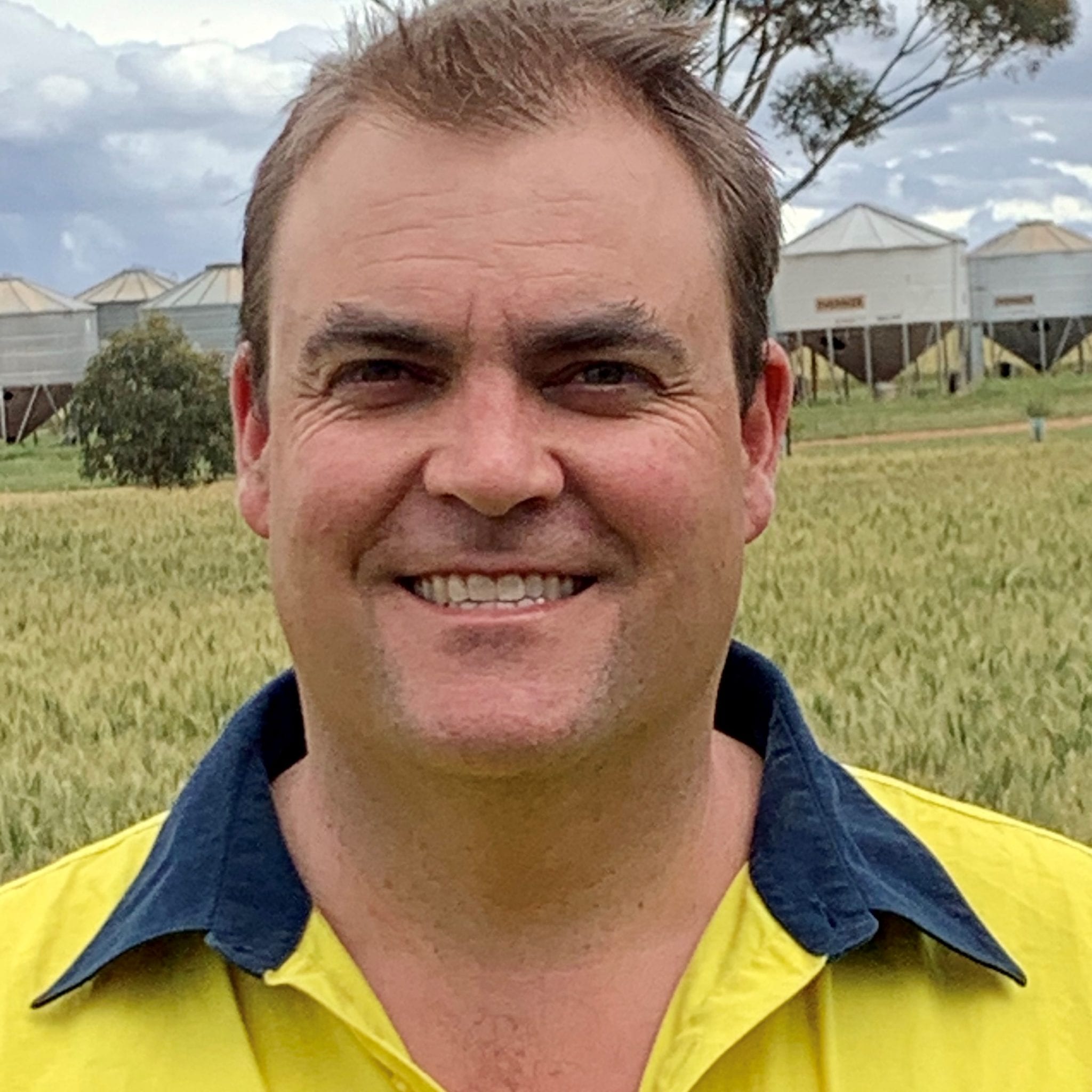Grain growing today: Protecting the land to feed Australians and the world

Video: Hear from Australian grain growers (2:55)
Australia is a unique and hard environment to farm in - there's little moisture, a lot of heat and many other elements which cause challenges. Over time, Australian growers have learned how to overcome these challenges and enable sustainable practices by harnessing innovations such as technology and chemicals.
Australian grain growers are some of the most responsible users of chemicals globally and operate under strict regulations. At every step, chemicals are handled with the utmost care to protect not only farm workers but also the surrounding environment.
Watch this video to hear grain growers around Australia share more about the vital role these tools have to support safe, sustainable farming and the implication to food production without them.
Check out the questions below to learn more.

Grow your understanding
Why do Australian grain growers use chemicals?
Australian grain growers use chemicals such as herbicides, insecticides and fungicides to control pests, weeds and diseases that can damage crops. Herbicides are used to help protect crops from weed competition and ensure water and valuable nutrients are being directed to crops, not the weeds. The use of agricultural chemicals has enabled environmental outcomes from sustainable practices and ensures a reliable food supply to meet global demand. Agricultural chemicals are applied within strict safety regulations and are a tool used to preserve Australia’s natural resources and ensure safety for both domestic and international consumers of agricultural products.
Are agricultural chemicals safe for the environment and wildlife?
Australian grain growers are required to follow strict regulations and safety guidelines in order to use agricultural chemicals. These regulations minimise chemical spray residue is minimal and help protect the environment, including wildlife and waterways. Strict regulations and best practice guidelines are in place to minimise drift and runoff. Australian farmers protect the environment by using appropriate application techniques and also adopting a range of technology and practises that minimise chemical use and off farm impacts.
"If we were to take a step back and lose chemistry, and go back to practices that involve tillage and burning up diesel, big four-wheel drive tractors, high emissions - it's a thousand steps back."

Ben Taylor

Are these chemicals safe for humans?
Australia's agricultural chemical application standards are among the strictest in the world. The independent Australian Pesticides and Veterinary Medicines Authority (APVMA), rigorously assesses the safety of all agricultural chemicals, including appropriate handling measures, before approving them for use.
Australian growers are required to prioritise safety and follow the label instructions established by the APVMA. Mandatory training requirements are in place in most States and Territories to underpin safe handling practices for growers and their workers. Ongoing training is also available to growers to cover safe handling and application practices. The use of technology such as sealed cabs and personal protective equipment adds further safety to the process and minimises direct chemical exposure.
Used incorrectly, any chemical – whether used around the house or on farm - can potentially cause harm. Very strong regulatory standards ensure agricultural chemicals are restricted to specific situations and used under strict guidelines.
Are crops safe to eat after being treated with chemicals?
For chemicals to be approved for use in Australia, they must pass a strict assessment to ensure they do not impact food safety. This assessment will determine ‘label conditions’ which outline how to use the chemical safely and specify ‘withholding periods’ (e.g. when you use the chemical in relation to when you harvest the crop). The Australian Government’s National Residue Survey (NRS) is responsible for testing food products to ensure they meet strict food safety standards. This testing ensures grain is safe for human consumption and meets international export standards. It ensures Australian and international consumers can have the highest confidence in Australian produce.
"It's really important to be operating in a safe environment. We monitor the wind speed, and weather conditions to make sure we're applying chemicals in the right conditions so it's safe to do so. The technology with the application equipment, the sprayers we use are high-tech. All our farm staff who use chemicals are trained and accredited. That's to ensure the safety of our people, and the safety of our environment and crops to produce a high-quality, safe product."

Richard Konzag

What would be the impact of a change in agricultural chemical usage for Australia?
A significant reduction in chemical use could have several consequences for Australian agriculture including:
- Increased weed and pest pressure: Reduced effectiveness in controlling weeds and pests leads to crop damage and yield losses.
- Lower crop yields: Increased pest and disease pressure results in lower agricultural productivity.
- Higher production costs: Farmers may need to rely on more labour and machinery-intensive methods to manage pests and weeds.
- Economic challenges: Reduced agricultural productivity would impact export markets and domestic food supply, potentially leading to higher food prices.
- Environmental challenges: A return to more intensive tilling practices to control weeds would result in greater use of diesel (increased carbon emissions) and in greater soil erosion, including dust storms.
Balancing effective pest and weed control with environmental sustainability is crucial. The Australian grains industry invests in research and development, through the Grains Research and Development Corporation, to support the identification of new technologies and practises to minimise chemical use and identify alternative practices for weed and pest control on farm.
How has technology changed on-farm chemical use in Australia?
Australian grain growers continue to embrace new technologies and approaches to improve efficiency of production. New technology like GPS-guided sprayers, optical spot spray technology and drones have helped minimise chemical use by applying precise amounts to target areas, reducing herbicide use, saving costs and minimising herbicide use. Additionally, farmers use integrated weed management strategies, combining chemical and non-chemical methods to reduce reliance on chemicals and protect the environment.
"Every load of grain that leaves our farm is tested to make sure that it meets the strict food safety standards. To be a food producer, to be able to feed Australians, but also other countries that don't have capacity to do that, I think is a great thing to be involved in."

Judith Foss

What is minimum till agriculture, and why are chemicals important in these systems? What would happen if you couldn’t use herbicides in minimum till systems?
Minimum till agriculture avoids soil disturbance with cultivation and often involves retaining crop stubble, which conserves soil moisture and reduces erosion – key to sustainable farming. Chemicals are important to control weeds that would otherwise compete with crops, ensuring efficient use of resources and maximising yields. This is critical for farming in Australia’s low rainfall environment. Without herbicides, weeds would quickly take over in minimum till systems, competing with crops for nutrients and water. This would significantly reduce crop yields, leading to lower production and potentially higher food prices.
Why do growers need to use different types of herbicides to control weeds? What would happen if you could only use one type?
Different herbicides target specific weed species and have different modes of action. Rotating the use of a variety of herbicides helps prevent weeds developing resistance to a particular chemical and ensures effective control. If only one type of herbicide was used, it could lead to widespread herbicide resistance as more tolerant weeds become dominant in a population. This would make it difficult to control weeds, reducing crop yields and increasing the need for alternative, less effective control methods.
What are the alternatives to chemical use?
The use of chemicals in a responsible and safe manner is an essential part of modern agriculture and have a critical role in farm sustainability. Australian grain growers use chemicals responsibility to ensure they are safe and effective. Chemicals are used in combination with a range of different practices (referred to as integrated weed management or integrated pest management, including biological control, crop rotations, use of resistant crop varieties) to minimise chemical use. In the absence of chemicals farmers would have to rely on tillage to control weeds, which causes damage to the soil including compaction and erosion and requires increased energy use, and carbon emissions, on farm.
"The environmental outcomes of the way we used to farm by today's standards are very, very poor."

Zachary Whale

Why have paraquat and diquat been banned in other countries?
Paraquat is classified as a restricted chemical in Australia available only to trained operators. It is used to underpin environment outcomes within sustainable practices such as minimum-till and no-till farming.
While these chemicals have been banned in some countries, there are two important things to note:
- The have been banned for a variety of reasons, including in some countries because they have been linked to cases of self-harm.
- Many of these other countries have very different farming environments and practices, where viable alternatives may be available, unlike Australia.
Australia operates a risk-based approach to the evaluation of agricultural chemicals, which considers the likely exposure to the substance and is informed by scientific studies and data. Other markets use different frameworks to evaluate chemicals for example, the European Union (EU) has adopted a hazard-based approach to chemical regulation and regulates substances based on their intrinsic properties. Australia’s unique farming environment requires an appropriate regulatory framework that accounts for our farming conditions and effective measures that can be used to manage risks associated with a chemicals.
New technology like GPS-guided sprayers, optical spray technology and drones have helped minimise chemical use by applying precise amounts to target areas. Additionally, farmers use integrated weed management strategies, combining chemical and non-chemical methods to reduce reliance on chemicals and protect the environment.
There are limited alternatives to the chemicals paraquat and diquat and these chemicals play an essential role in integrated weed management strategies. A change in their usage would jeopardise sustainable farming practices and potentially threaten food supply.
"We live in the community we're operating, so making sure we're not harming anything around us is critical."

Damien Sommerville

Are paraquat and diquat linked to Parkinson’s disease?
In its recent review of paraquat and diquat the APVMA was not able to identify scientific proof or consensus that paraquat or diquat cause Parkinson’s disease.
As part of its recent regulatory decision on paraquat, the independent APVMA conducted a review of all available scientific evidence in relation to the safety these chemicals.
The APVMA said: “Conclusions of the review conducted by APVMA, as well as the review undertaken by the US EPA, do not support the claim that there is a growing body of evidence indicating a causal link between exposure to paraquat and the development of Parkinson’s disease."
Today, regulations and safety guidelines prescribe avoiding direct exposure by growers and farm workers. This is achieved with protective equipment and technology such as sealed cabs.
Want to know more?
